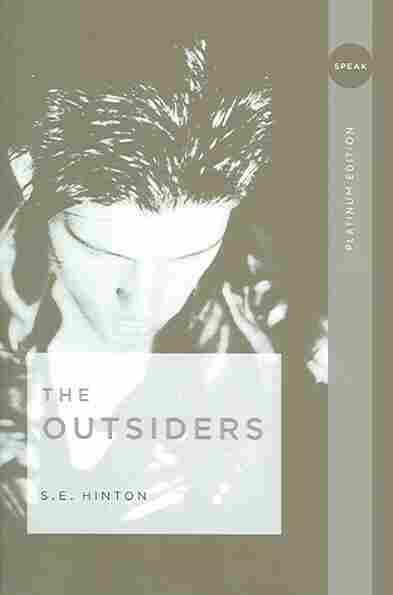In the realm of American literature, few novels resonate as profoundly as S.E. Hinton’s “The Outsiders.” This quintessential coming-of-age story, set in the turbulent 1960s, delves into themes of identity, class conflict, and the strife of adolescence. One might ponder: what if we stripped away the age of the protagonist, Ponyboy Curtis, and placed his struggles within the context of today’s society? Would the lessons and emotional gravitas remain intact, or would they transform into something altogether different? This question invites us into a deeper exploration of Hinton’s timeless narrative and allows us to challenge the separations that we often impose between past and present.
At the heart of “The Outsiders” is the dichotomy of two social factions: the Greasers and the Socs. The Greasers, who embody the lower socio-economic class, are consistently at odds with the wealthier Socs, who often regard the greasers with disdain and contempt. This societal division is starkly illustrated through Hinton’s richly drawn characters, who bring to life the blistering tensions bred by economic disparity. Ponyboy Curtis, the introspective and sensitive narrator, finds himself navigating these treacherous waters. His observations offer a lens through which readers can empathize with the marginalized, challenging us to reflect on our own societal constructs.
Hinton deftly encapsulates the angst of youth, making readers acutely aware of the burgeoning yet often chaotic energy that comes with adolescence. Ponyboy’s contemplations render him relatable, as many readers can recall their own moments of isolation or struggle against the tide of peer pressure. The playful question of whether today’s youth reflect the same emotional turmoil is one worth pondering. Are today’s teenagers grappling with the same internal conflicts as Ponyboy, or have those challenges evolved into new forms, masked by the digital landscape of social media and online personas?
The novel’s plot thickens as Ponyboy encounters life-altering events that compel him to reassess not only his identity but also his perceptions of loyalty and friendship. His deep bond with other members of the Greaser gang, particularly Johnny Cade, underpins the narrative with a poignant exploration of camaraderie. The relationship between Ponyboy and Johnny poses an intricate challenge: how do our relationships shape our understanding of ourselves? Within the turbulent backdrop of gang violence and socio-economic strife, Hinton crafts a tapestry that demonstrates the complexity of human connections.
The climactic moments of “The Outsiders” evoke not merely shock but also an invitation for introspection. The fateful conflict that leads to Johnny’s life-altering injuries serves as a catalyst for a cascade of revelations for Ponyboy. His eventual realization that “things are rough all over” urges readers to extend empathy beyond their immediate circles. This fundamental acceptance of shared struggle forms the crux of Hinton’s message, resonating deeply even in today’s polarized climate.
Symbolism plays an integral role in Hinton’s narrative, enriching the text with layers of meaning that encourage analytical discourse. The recurring motif of the sunset emerges as a vital symbol of hope and unity for the characters. For Ponyboy, cherishing the fleeting moments when the sun dips below the horizon becomes a metaphor for the transient beauty of life and the shared experiences that transcend social boundaries. It poses yet another challenge: how often do we take a moment to appreciate the ‘sunsets’ in our lives? Transformation and understanding arise not only in monumental events but also in fleeting moments of connection.
Hinton’s spare yet evocative prose captivates readers, painting vivid imagery that breathes life into her characters. Each sentence is crafted with deliberate precision, reflecting the raw emotions and realities faced by teenagers navigating a world rife with uncertainty. Her exploration of grief, loss, and the yearning for belonging resonates with a timeless urgency. The analytical reader might consider how this stylistic choice amplifies the emotional stakes, encouraging us to examine our responses to both literature and life.
Moreover, Hinton’s unapologetic portrayal of violence prompts critical reflections on human nature and societal structures. With edge-of-the-seat encounters and unexpected tragedies, the narrative pushes readers to confront uncomfortable truths about aggression and the need for solidarity amidst chaos. How do we as a society grapple with these notions today? “The Outsiders” orchestrates pressing dialogues around systemic issues that remain relevant, beckoning us to question our collective responsibility toward one another.
As the novel reaches its denouement, the central theme of “staying gold” emerges, encapsulating the essence of retaining one’s innocence and goodness in the face of adversity. This poignant mantra challenges readers to contemplate how they, too, preserve their integrity amid societal turbulence. The juxtaposition of innocence and the harsh realities of life forces one to ask: can we remain steadfastly ‘gold’ in a world that often seeks to dull our shine?
In summation, “The Outsiders” invites readers to traverse the chasms of youth, allegiance, and identity, all while leaving an indelible mark on our understanding of social constructs. Hinton’s ability to encapsulate the universal struggles of her characters transcends the confines of time, beckoning us to initiate conversations about empathy and connection across generational divides. The novel is not merely a narrative about gangs and rivalry; it is a mirror reflecting the complexities of human experiences, urging readers to acknowledge the shared sunsets that bind us all, regardless of our differences.
